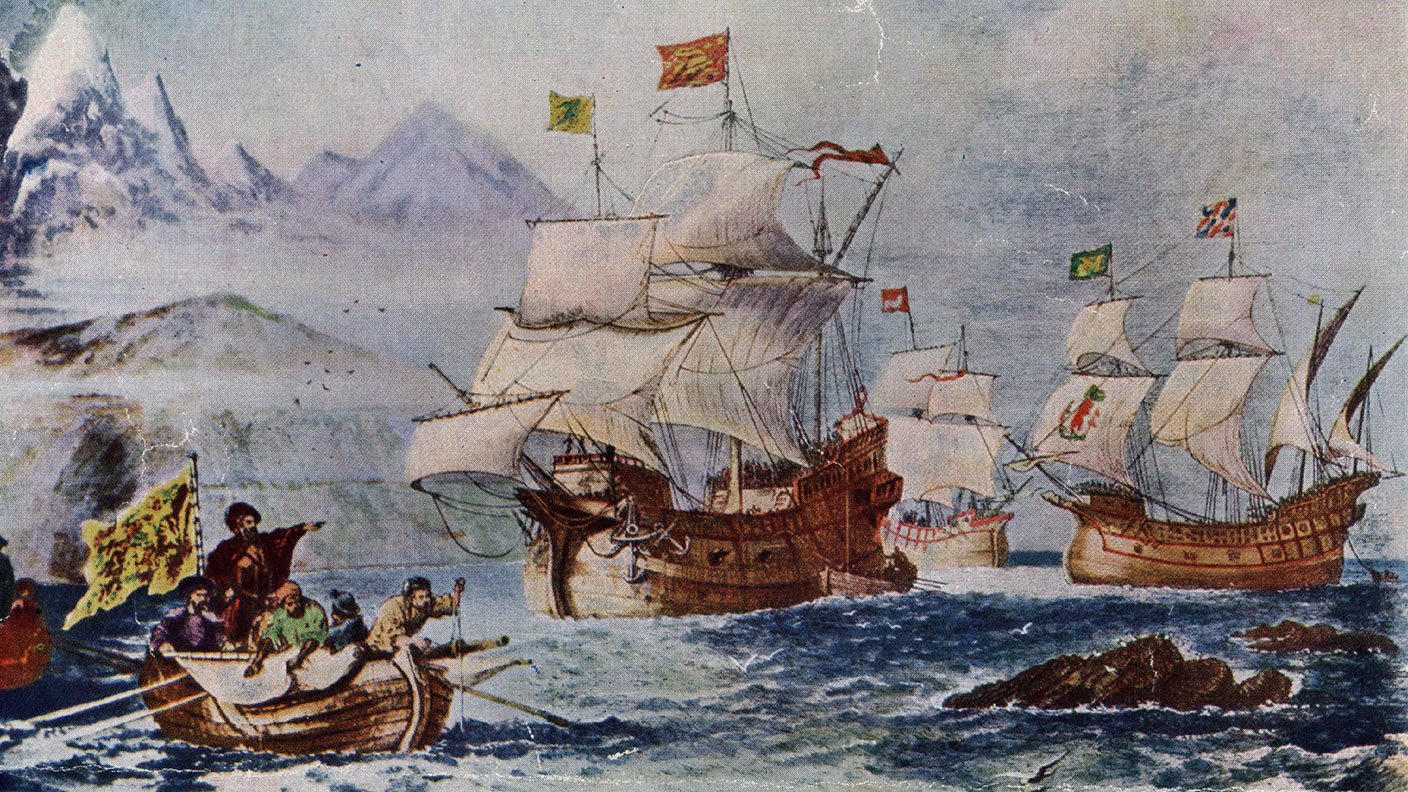21 October 1520: Magellan finds the path to the Pacific
On this day in 1520, a fleet of five ships, led by Ferdinand Magellan in search of a passage to the Pacific, first entered the waterway that now bears his name.


In the 16th century, Portugal was making a fortune from sailing to the Moluccas, the legendary spice islands in the Pacific. Once there, they would load up their ships with the aromatic cargo and sell it for a king's ransom back in Europe. It wasn't long before Spain wanted in on the action.
However, owing to the Treaty of Tordesillas of 1494, only Portugal was allowed to sail eastwards to the islands. So in 1519, the Spanish king, Charles I, dispatched Portuguese explorer, Fernão de Magalhães, AKA Ferdinand Magellan, with five ships – Magellan's ship the Trinidad, plus the San Antonio, the Concepcion, the Santiago and the Victoria. He was to sniff out a westerly route to the islands, a route that would, if successful make Magellan's expedition the first to circumnavigate the globe.
After leaving Seville, hopping off the Canary Islands and bouncing off the coast of Brazil, Magellan arrived at Cape Virgenes in October 1520. On 21 October, four ships – the Santiago having been wrecked while searching for the passage in April – entered the waterway that still bears the expedition leader's name, looking for the Pacific. Finding it wasn't as easy as it sounds: the strait is 360 miles long and varies in width between 2.5 and 70 miles. Along its flanks are countless fjords, and any one of those could either be the route out to the open ocean or end in a blind alley. While searching for the route, the crew of the San Antonio mutinied and the ship returned to Spain.
MoneyWeek
Subscribe to MoneyWeek today and get your first six magazine issues absolutely FREE

Sign up to Money Morning
Don't miss the latest investment and personal finances news, market analysis, plus money-saving tips with our free twice-daily newsletter
Don't miss the latest investment and personal finances news, market analysis, plus money-saving tips with our free twice-daily newsletter
Magellan never quite made it to the spice islands, however. The devout Catholic had a habit of insisting on converting the locals to Christianity. This didn't always go down well with the islanders, and Magellan died fighting in the Philippines the following April.
Therefore, contrary to most pub quizzes, Ferdinand Magellan wasn't the first person to circumnavigate the globe, since he never made it back. But a Basque sailor named Juan Sebastian Elcano and 18 of the original expedition's 241 members did, sailing the spice-laden Victoria back to Spain in 1522.
But the really surprising thing is that even Elcano may not be the man deserving of the credit. Magellan had a slave called Enrique, who came from what is today Malaysia. So, in effect, when Magellan set off on his round-the-world voyage, Enrique was heading very close to home. So, was Enrique the first person to circumnavigate the globe? We'll never know for sure.
Get the latest financial news, insights and expert analysis from our award-winning MoneyWeek team, to help you understand what really matters when it comes to your finances.

-
 31 August 1957: the Federation of Malaya declares independence from the UK
31 August 1957: the Federation of Malaya declares independence from the UKFeatures On this day in 1957, after ten years of preparation, the Federation of Malaya became an independent nation.
-
 13 April 1960: the first satellite navigation system is launched
13 April 1960: the first satellite navigation system is launchedFeatures On this day in 1960, Nasa sent the Transit 1B satellite into orbit to provide positioning for the US Navy’s fleet of Polaris ballistic missile submarines.
-
 9 April 1838: National Gallery opens in Trafalgar Square
9 April 1838: National Gallery opens in Trafalgar SquareFeatures On this day in 1838, William Wilkins’ new National Gallery building in Trafalgar Square opened to the public.
-
3 March 1962: British Antarctic Territory is created
Features On this day in 1962, Britain formed the British Antarctic Territory administered from the Falkland Islands.
-
10 March 2000: the dotcom bubble peaks
Features Tech mania fanned by the dawning of the internet age inflated the dotcom bubble to maximum extent, on this day in 2000.
-
9 March 1776: Adam Smith publishes 'The Wealth of Nations'
Features On this day in 1776, Adam Smith, the “father of modern economics”, published his hugely influential book The Wealth of Nations.
-
 8 March 1817: the New York Stock Exchange is formed
8 March 1817: the New York Stock Exchange is formedFeatures On this day in 1817, a group of brokers moved out of a New York coffee house to form what would become the biggest stock exchange in the world.
-
7 March 1969: Queen Elizabeth II officially opens the Victoria Line
Features On this day in 1969, Queen Elizabeth II took only her second trip on the tube to officially open the underground’s newest line – the Victoria Line.

